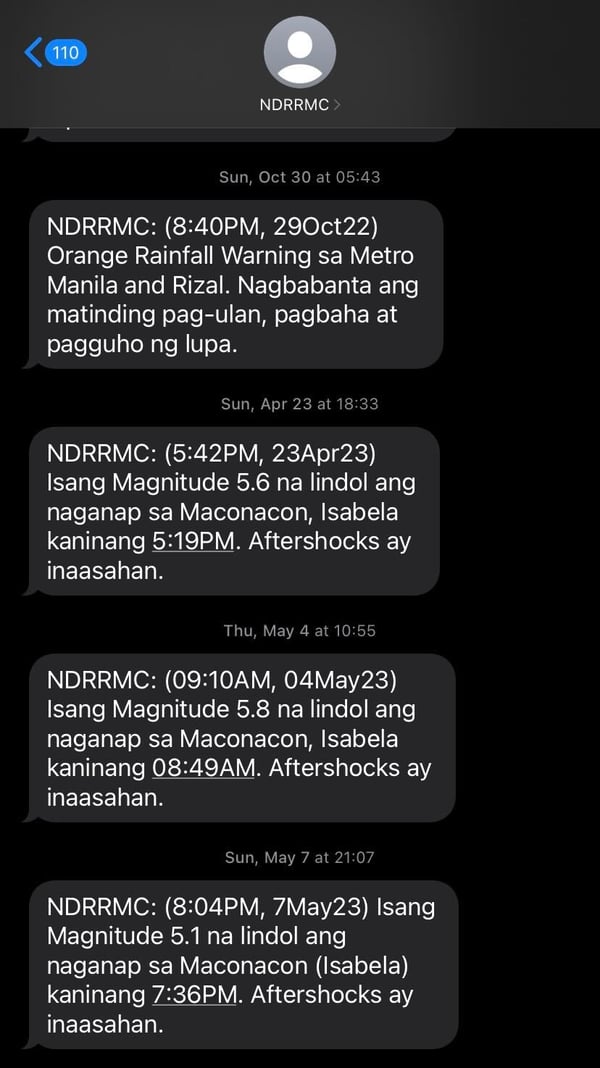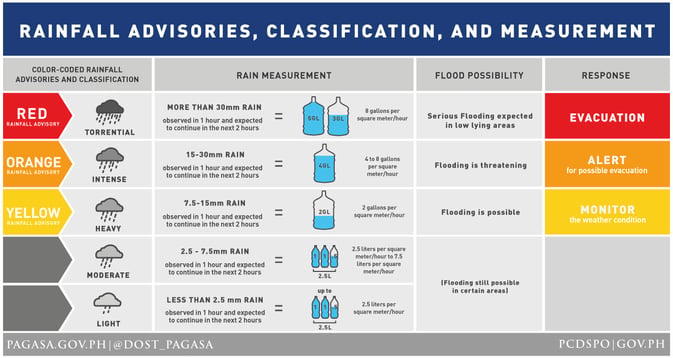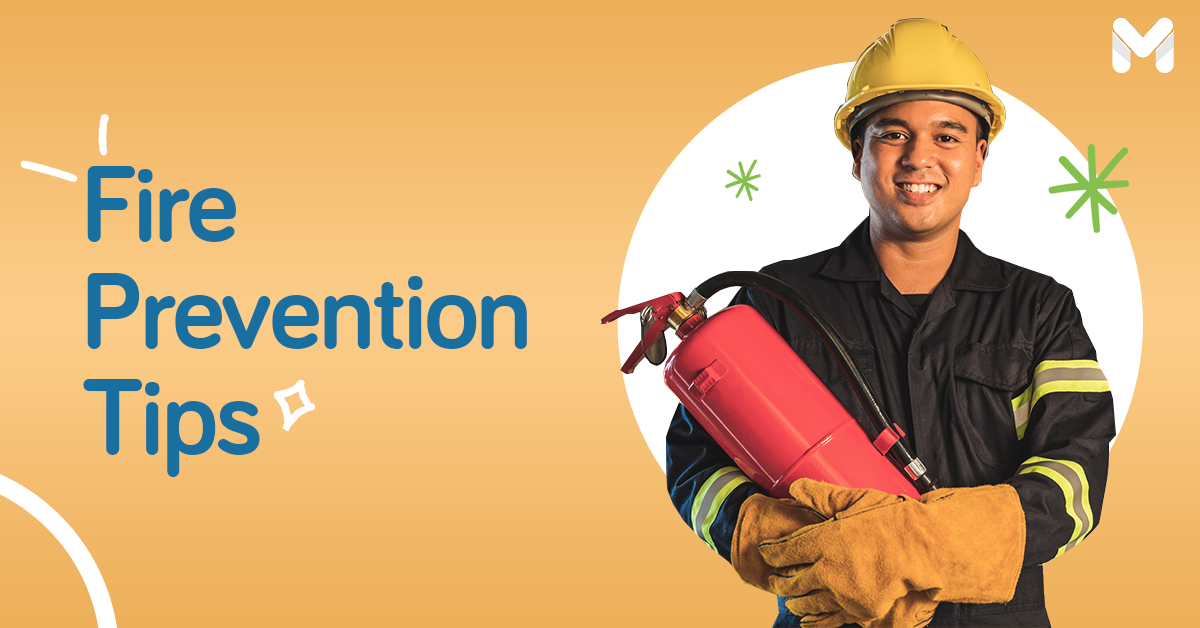Have you been receiving a lot of NDRRMC text alerts lately? Did the ringtone almost trigger a heart attack?
That's the NDRRMC (National Disaster Risk Reduction and Management Council) doing its job as the government's disaster preparedness arm.
Whenever the country is about to experience a typhoon, earthquake, volcanic activity, or any other natural disaster, the NDRRMC sends out these updates to all mobile phone users in the Philippines.
But every time Filipinos receive an NDRRMC alert, there's also no shortage of social media posts and reactions online, ranging from amused and grateful to annoyed.
Here's the thing: regardless of what you feel about the unwelcome barrage of text messages, the NDRRMC is simply sending out important advisories regarding the rainfall warning system in the Philippines and other disasters. Better safe than sorry, right?
Why You're Receiving an NDRRMC Text Alert Today
The SMS alerts you've been receiving are part of the NDRMMC's warning system to ensure public safety and preparedness during disasters. Through these text messages, the NDRRMC keeps everyone informed about an upcoming typhoon, heavy rainfall, flooding, earthquake, or volcanic activity.

When PAGASA (Philippine Atmospheric, Geophysical and Astronomical Services Administration) issues a warning advisory, the NDRRMC translates it into a short, easy-to-understand message in Filipino and then forwards it to telecommunications providers for dissemination to the public.
The Free Mobile Disaster Alerts Act (Republic Act 10369)[1] requires telcos to send out alerts from the NDRRMC and other relevant government agencies at no cost to mobile phone subscribers.
But why do NDRRMC text message alerts have to be so loud and panic-inducing? Well, that's intentional on the NDRRMC's part—it has to create a sense of urgency. Your phone will ring and vibrate non-stop until you read the messages.
The NDRRMC wants you to pay close attention to its warnings, so you can immediately prepare for any disaster, like evacuating your family and parking your car in a safer area.
The PAGASA Rainfall Warning System in the Philippines

What do the NDRRMC alert levels (yellow, orange, or red) mean?
These color-coded rainfall warning advisories describe how strong the rains are and how likely flooding is. These colors also stand for what actions must be taken by the community.
- Yellow - Community Awareness
- Orange - Community Alert/Preparedness
- Red - Community Response
Just remember that the darker the color, the more dangerous the situation in an affected area.
Read more: Typhoon Emergency Kit Items You Shouldn’t Forget for the Rainy Months
🌧️ Yellow Rainfall Warning Meaning
When PAGASA issues a yellow rainfall warning, it means that heavy rains have fallen and will continue for the next three hours. Flooding is possible in low-lying areas and near river channels.
Everyone in the affected areas should stay alert and monitor weather updates.
🌧️ Orange Rainfall Warning Meaning
What does an orange rainfall warning in the Philippines mean? When you receive this NDRRMC alert, it means that intense rains have fallen and will continue for the next three hours. Flooding is threatening in low-lying areas and near river channels.
Be prepared. Residents in affected areas must be ready for a possible evacuation due to threats of a flood.
🌧️ Red Rainfall Warning Meaning
What is red rainfall advisory, you ask? When you receive a red rainfall warning, it means torrential rains have fallen and will continue for the next three hours.
Since severe flooding is to be expected, you must quickly take action. Residents in affected areas must start evacuating as soon as possible.
Why NDRRMC Text Alerts in the Philippines are Important
-Jun-16-2023-04-11-10-1173-AM.png?width=674&height=449&name=Pics%20for%20blog%20-%20600x400%20(6)-Jun-16-2023-04-11-10-1173-AM.png)
The NDRRMC text alerts, no matter how annoying or disturbing they can be, should be taken seriously. Remember how Metro Manila and other affected provinces were caught unprepared during the onslaught of Tropical Storm Ondoy in 2009? Had families received early warnings back then, more lives and properties would've been saved.
While it may be more convenient to just disregard these emergency alerts in the Philippines, consider what would happen if you aren't aware of and prepared for flooding, earthquakes, and other calamities. Will you just wait until your home gets flooded or destroyed before you take your family to a safer place?
NDRRMC Text Alerts: FAQs
1. Why is NDRRMC not texting me?
Wondering why you didn't get an NDRRMC earthquake alert after that magnitude 6.3 earthquake in Batangas last June 15, 2023? Or frustrated with the fact that you often receive rainfall warning advisories hours after PAGASA originally issues them?
If you're receiving delayed NDRRMC alert messages or none at all, here's why. NDRRMC uses two messaging systems: short messaging system (SMS) and cell broadcast service (CBS). CBS is more efficient, but since not all devices can accommodate this system, the NDRRMC also sends advisories via SMS—which takes more time.[2]
2. How to get NDRRMC alerts?
How do I activate emergency alerts on my phone? Just head to your settings and check if emergency alerts are enabled.
If you want to know how to turn on NDRRMC alerts for Android devices, go to your messaging settings and look for Emergency Alerts or Cell Broadcast. Meanwhile, iPhone users can head to Settings, then Notifications, and turn on Emergency Alerts.
To receive the NDRRMC latest weather updates, follow its Facebook page[3] and Twitter account as well.[4] Alternatively, head over to the agency's Monitoring Dashboard for live updates.[5]
In case of emergencies, contact NDRRMC's telephone numbers at (02) 911-1406, (02) 912-2665, and (02) 912-5668.
3. How to remove NDRRMC alerts?
How to turn off NDRRMC alerts for Android and iOS? Just toggle off Emergency Alerts in your messaging or notification settings.
However, think twice about doing this—these alerts are pretty important, after all.
Final Thoughts
Filipinos are known—and admired—for resiliency in times of disaster. If we can withstand the typhoons that batter the Philippines, should we really complain about simple inconveniences like waking up to a loud NDRRMC text alert? These warnings during natural calamities can save lives and properties.

Sources:
- [1] Free Mobile Disaster Alerts Act (Republic Act 10369) (NDRRMC)
- [2] How NDRRMC issues its emergency mobile warnings (Rappler, 2018)
- [3] NDRRMC on Facebook
- [4] NDRRMC on Twitter
- [5] NDRRMC Monitoring Dashboard









